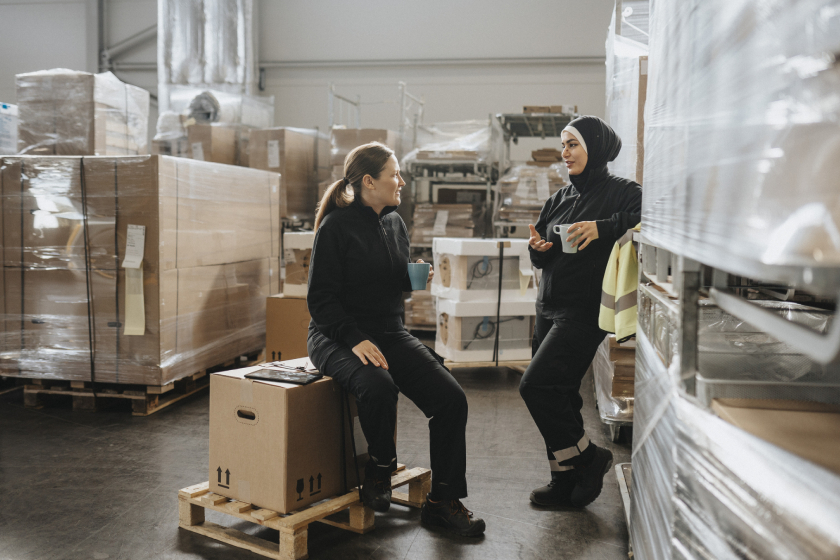Release of proposed ASX Corporate Governance Principles and...
The IPA is a member of the ASX Corporate Governance Council, which has been consulting on proposed changes to the...
READ MORE
The Intergenerational Report 2023 says more people are in paid work than ever before, but labour force participation is projected to decline. As productivity growth also slides, how will impacts be felt?

In the IGR series, Public Accountant is taking a deep dive into the sixth Intergenerational Report.
Released twice each decade since their production was legislated in the late ’90s, Australia’s Intergenerational Reports offer 40-year fiscal projections. IGR6 forecasts the demands on Australia’s budgets to 2063.
Previously in this series, we have examined:
Next week, we’re rounding out the series with a discussion of Commonwealth budgets, revenue and taxation. In the meantime, this article looks at forecast changes to labour force participation and their impact on the economy.
Right now in Australia, labour force participation is at record highs, with growth largely due to the significant increase in women entering the workforce over the past 40 years, according to the sixth Intergenerational Report 2023.
However, IGR6 doesn’t paint such a rosy picture for the next several decades, as the population rapidly ages. The current workforce participation rate of 66.6% is projected to drop to 63.8% by 2062-63.
“This reflects a growing population share of older Australians who tend to participate less in the labour force,” IGR6 says.
“Among those working, average hours worked per week is expected to decline slightly from around 32 to 31 hours per week by 2062-63. Average hours worked per head of total population aged 15 years and over is also projected to decline slightly as the population ages, from around 20 hours to 19 hours per week by 2062-63.”
The report is optimistic about the likely effects of this change, saying Australia is well placed to cope, thanks to our “responsive, effective education and training systems, forward-looking skills-based policy, and well-targeted migration”.
The effects will be further offset by increasing employment opportunities for people who previously had not been well represented in the labour force, including older Australians and women.
But it’s the “well-targeted migration” that economists look to when discussing why we needn’t be too worried. The major advantage Australia holds when it comes to labour force participation is that people from all over the world like the idea of living here.
Treasurer Jim Chalmers, at the launch of IGR6 in August, said the ageing population will create some challenges in terms of budget and growth, and that the smaller share of working-age people will undeniably place pressure on our tax base.
Some of these problems can be solved by policy settings that encourage retirees to draw down and use their superannuation, rather than leaving large inheritances. In other words, if the next, very large generation of retirees is less frugal than the current one, the economy will receive a boost.
As to the rest of the problem, it’s worth remembering that participation is one of three Ps. The other two are population and productivity.
“Together, they give you the long-run size of the Australian economy,” Matt Grudnoff, Senior Economist at the Australia Institute, says.
“Participation and population together work out how big your workforce is. And productivity is simply your output per worker. So, the three of them together create the size of the economy, and stronger participation is a good thing.”
When participation falls, as has been projected by the IGR, in a nation that exists in a vacuum, the economy will contract. This will likely have significant and negative effects on quality of life for the population in terms of infrastructure, health, education and more.
But while the ageing of the Australian population is very real, and is a challenge that society will need to find various ways to cope with over the next several decades, Australia does not exist in a vacuum. When it comes to workforce participation, Grudnoff says, the nation will make the most of its special superpower.
“We are in a pretty special place in that there is an enormous queue of people who are of working age and who have the skills that we want, and who would love to get into Australia,” he says.
“We’re constantly telling them ‘no, you can’t come’. So, absolutely there will be pressure around participation going forward, but there will always be that release valve, assuming something doesn’t change radically and the entire Australian economy doesn’t collapse.”
When we want more workers at all skill levels, Grudnoff says, we already have in place an immigration system that is focused on skills.
“That’s why I’m not super worried about labour force participation,” he says.
Finally, it’s important to recognise that nobody has any real idea of what will be happening 40 years from now.
Think back to 1983, four decades ago. Malcolm Fraser handed over the role of Prime Minister to Bob Hawke. The Ash Wednesday bushfires burned. The Sydney Entertainment Centre opened and construction of Tasmania’s Franklin Dam was blocked in the High Court. The word ‘internet’ was not in our vocabulary and the first mobile phone, which would look like a brick and cost $4,250, was still four years away.
“If you were in 1983, thinking about what the economy would be like in 2023, how accurate do you think you would be?” Grudnoff asks.